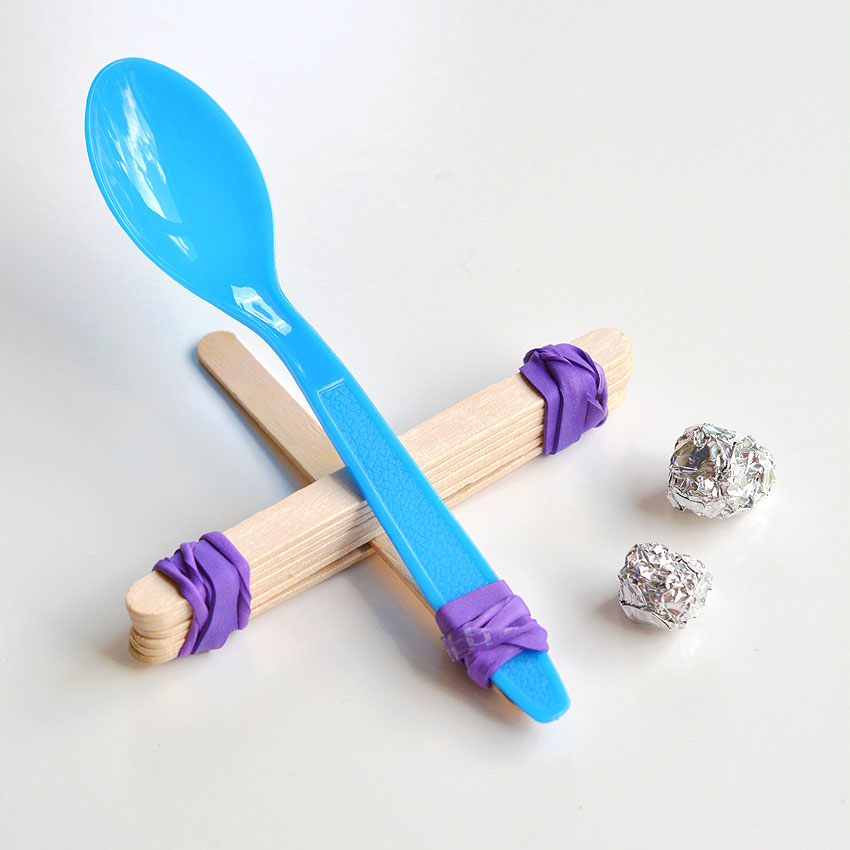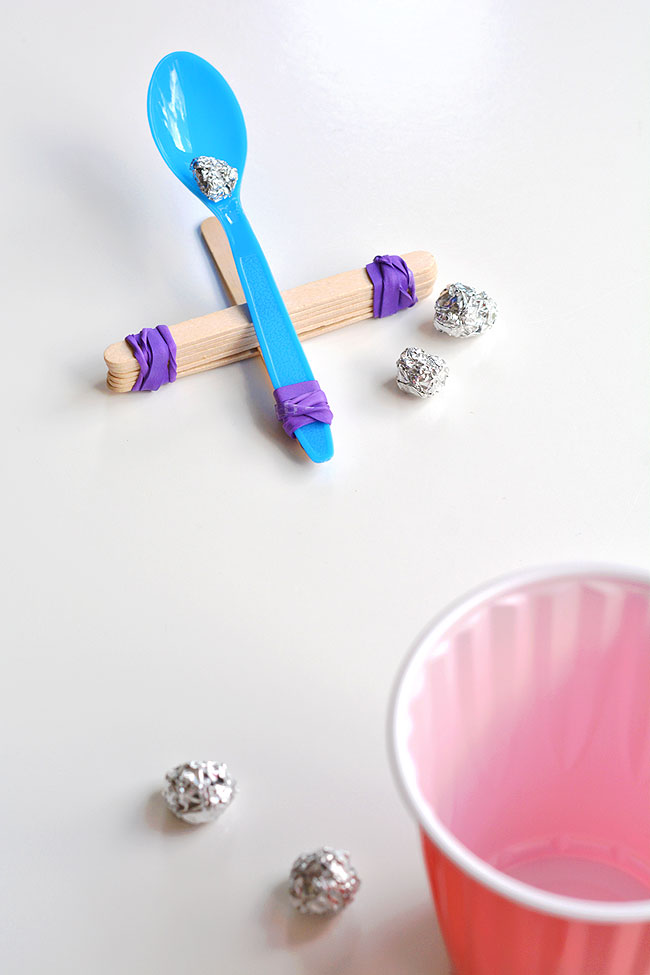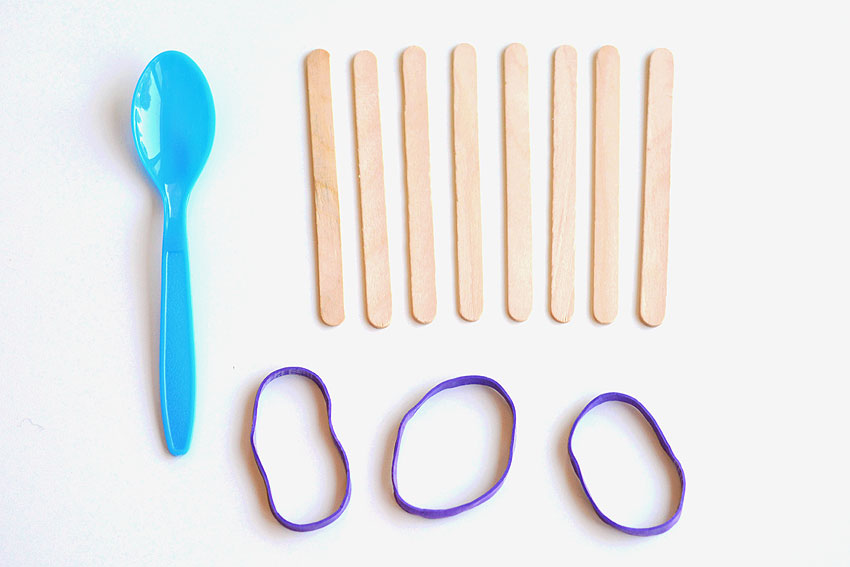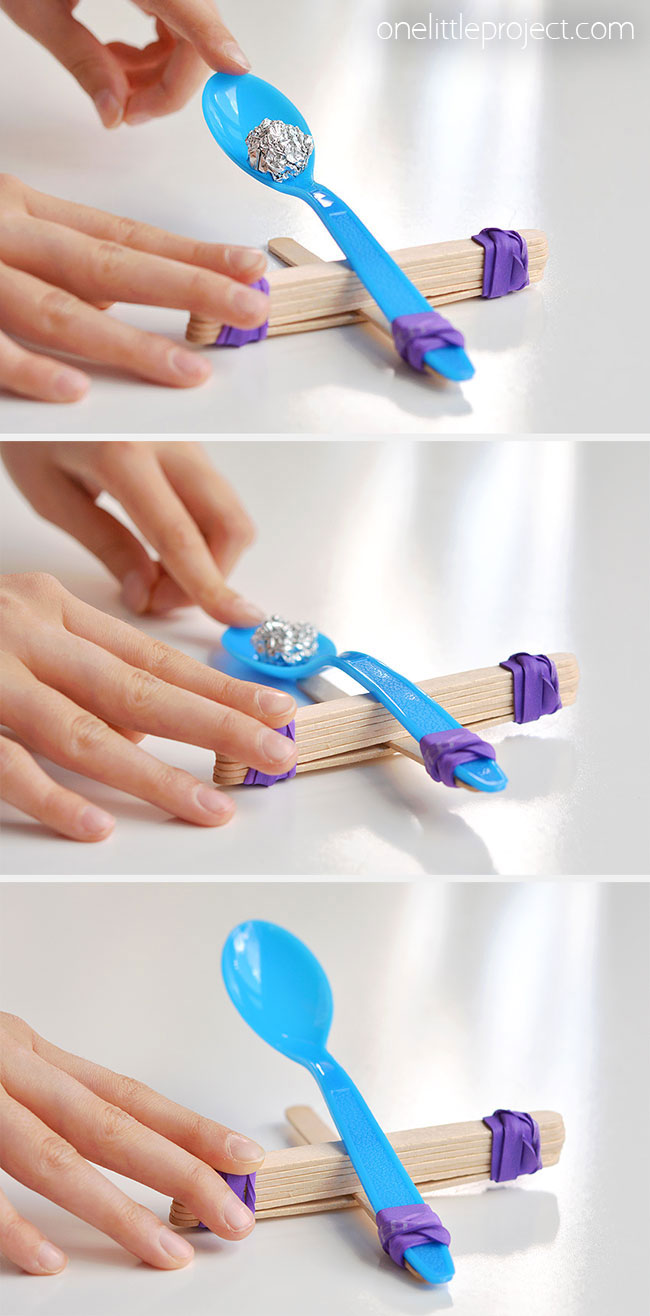
A popsicle stick catapult is a simple and fun way to teach kids about physics. It’s so easy to put together, with dollar store supplies or items you might already have in your cupboards. Within minutes, you can be experimenting with this simple machine.

The popsicle stick catapult is a classic science class activity for a reason. It’s so simple to build, and it’s so much fun to test out!
I love any activity that gets kids learning while they enjoy themselves. Toddlers will simply be entertained by sending objects flying, but older kids will be able to appreciate the simple science behind the catapult.
It’s fun to make a game of it! Keep score and see how many objects each person can catapult into a cup.
The STEM aspect of this activity can be highlighted by making predictions. Which object will fly the farthest? Which angle works the best? Keep a record of your results.
*Note: Scroll down for the step-by-step photo tutorial.
Looking for more fun ideas? Here’s some of our favourites:

This post contains affiliate links. If you use these links to buy something we may earn a small commission which helps us run this website.
The full printable instructions are at the end of this post, but here’s a list of products on Amazon that are similar to the supplies we used:

Objects with a bit of weight to them, like a ball of tin foil, are the perfect projectile. But you can send any object flying with these catapults (within reason!!), which makes them so much fun.
Try paper balls, marshmallows, eraser tops, bottle caps, or pom poms. Make a prediction about which object you think will fly the farthest!
We used the elastics that were around our asparagus bunches, and they worked perfectly. If you don’t have asparagus elastics, thicker elastics, like size #64 rubber bands, will work the best.
We first tried using rainbow loom elastics, but they were too loose. You definitely want heavier duty rubber bands for this experiment.

These popsicle stick catapults are a simple machine called a lever. You push the arm (plastic spoon) over the fulcrum (popsicle sticks) to launch the load (tin foil balls, or whatever you choose).
How levers work can be explained using Newton’s Laws of Motion. An object stays at rest until an external force is applied.
Pulling down the arm of the catapult is force, which creates potential energy. Releasing the arm changes the potential energy to kinetic energy, sending the load flying. Then gravity plays a part, bringing the load back down.
Try pulling the spoon down at different angles. If your spoon is flexible enough, pull it right down to the table before releasing it to get more speed.
You can also change the angle of the catapult by moving the stacked popsicle sticks closer to the elastic on the spoon. The closer they are to the elastic, the farther the projectile will go.
When the stacked popsicle sticks are farther from the elastic on the spoon, the objects tend to be shot straight up in the air. Experiment with different distances, and even different amounts of popsicle sticks in the stack, to see what works best.